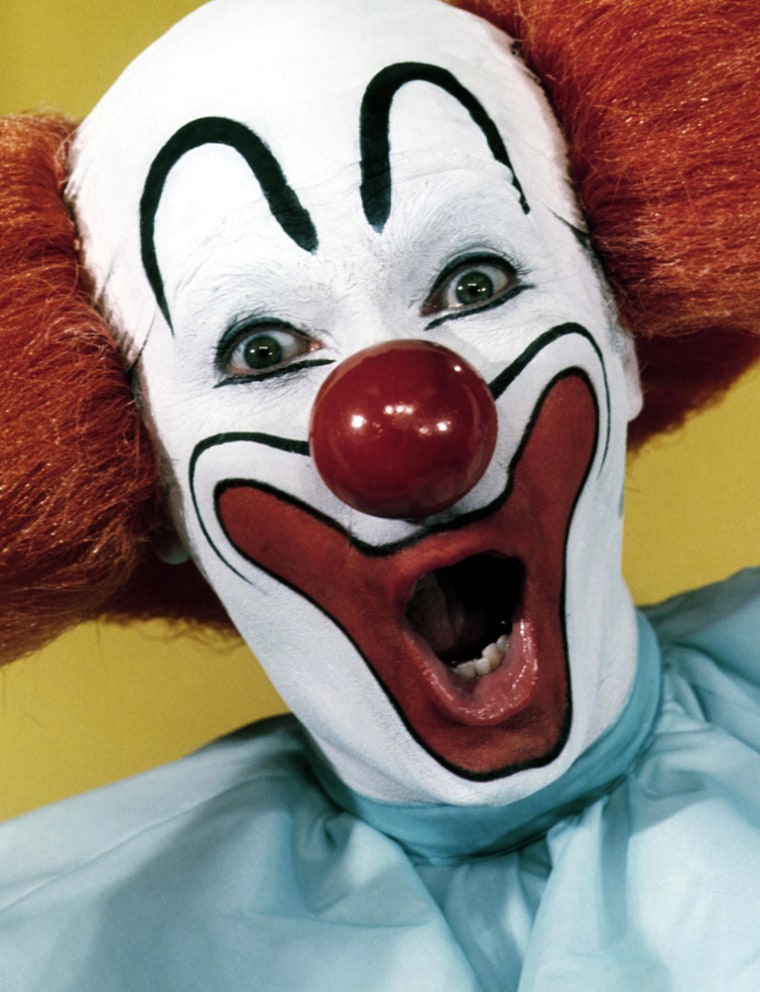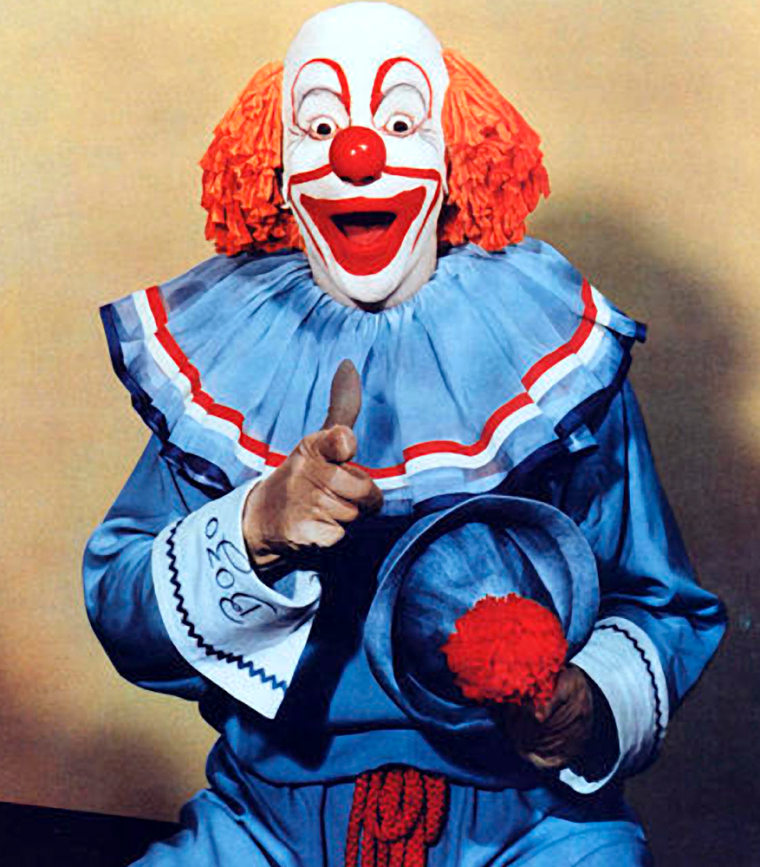There are no hand buzzers, trick flowers or balloon animals in this clown story. The issue is who created Bozo the Clown — and the dispute is wiping the smile off some clowns’ faces.
For years, promoter and entertainer Larry Harmon claimed to have both created the character and said he was the original.
Now the International Clown Hall of Fame in downtown Milwaukee is formally endorsing a different version: Capitol Records executive Alan Livingston created Bozo for recordings in 1946, and the late Vance “Pinto” Colvig was the first person to play the clown.
On Friday, the hall is posthumously inducting Colvig as the first Bozo.
Lifetime achievement plaque removed
That reverses the hall’s “Lifetime of Laughter Award” given to Harmon in 1990 as Bozo’s creator. The hall has since taken Harmon’s plaque off its honor wall.
Kathryn O’Dell, the hall’s executive director, said the hall was duped to believe Harmon created Bozo and didn’t find out the truth until ABCnews.com columnist and entertainment producer Buck Wolf reported Harmon was wrongly laying claim to the character.
“It was something that was hinted at and hinted at and we started to do research and sure enough the information we were getting from outside sources was true,” O’Dell said.
While Harmon popularized the character since the 1950s, Livingston and Colvig were first to develop it, she said.
Colvig’s voice was used in the first recordings and he wrote some of Bozo’s first songs, made the first live appearances and was the first Bozo on television.
Capitol Records Inc. sold all the rights to Bozo the Capitol Clown, except the masters for the previous records, in the mid 1950s to Harmon, who a few years earlier had answered a Capitol casting call to be a Bozo.
Harmon ended up training more than 200 Bozos over the years and turning Bozo into a character for 156 cartoons that he sold in the United States and around the world.
Harmon denies misrepresentation
Harmon, 79, said from his home in Los Angeles that he’s saddened to have the hall remove his plaque and he denied misrepresenting Bozo’s history.

“Isn’t it a shame the credit that was given to me for the work I have done they arbitrarily take it down, like I didn’t do anything for the last 52 years,” he said.
He said he has always acknowledged that Livingston created Bozo The Capitol Clown. But he said he created Bozo’s personality and image today as Bozo The World’s Most Famous Clown.
“What I created for the world was me and my image, what I sound like, what I look like, what I walk like, what the costume looked like, with my animation studio,” he said.
Bozo The Capitol Clown had red mop hair and spoke with a drawl. Harmon’s Bozo had bright orange-red yak hair and spoke faster and made up an entirely new vocabulary, like “wowie-kazowie.” The laugh was also different.
